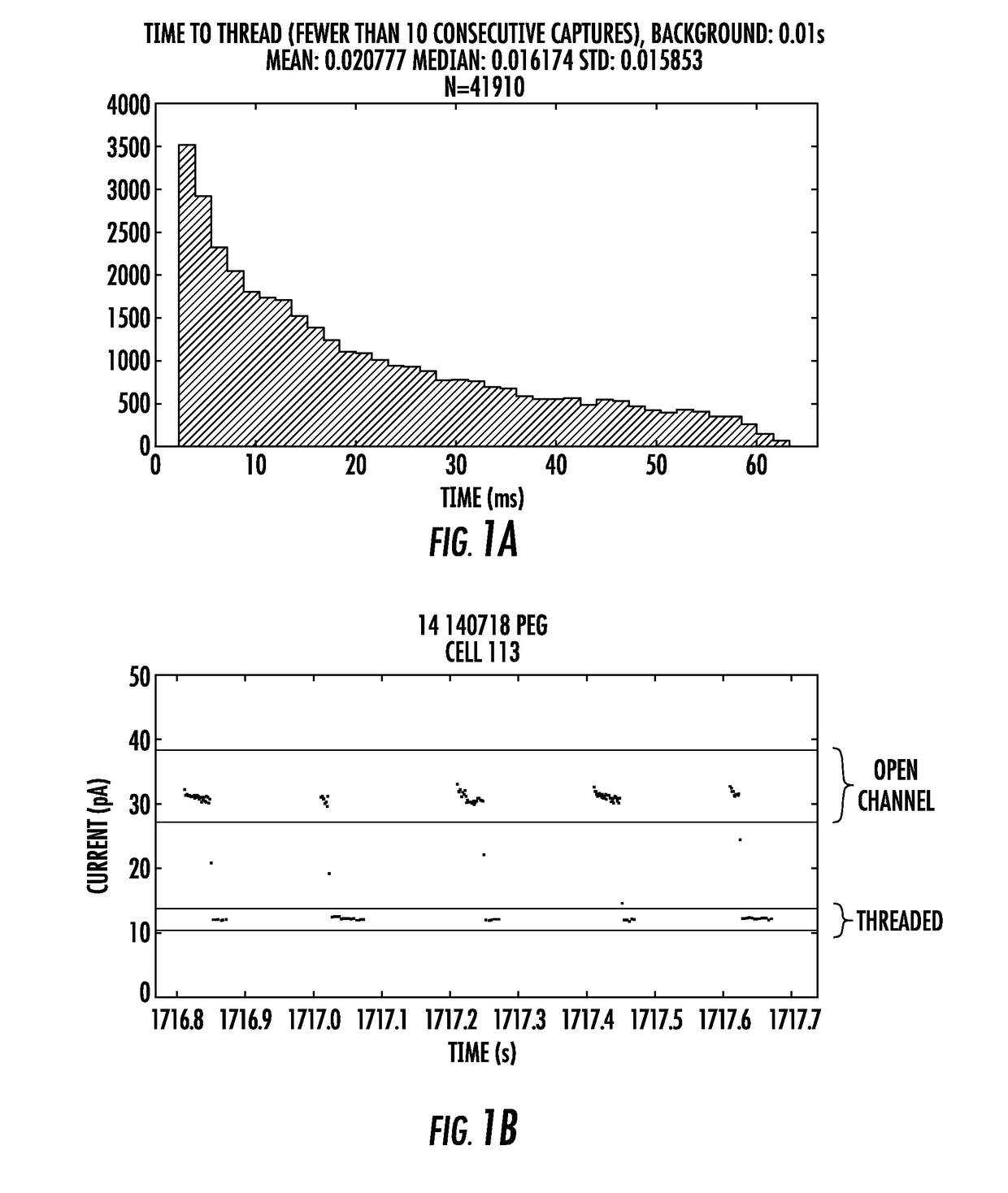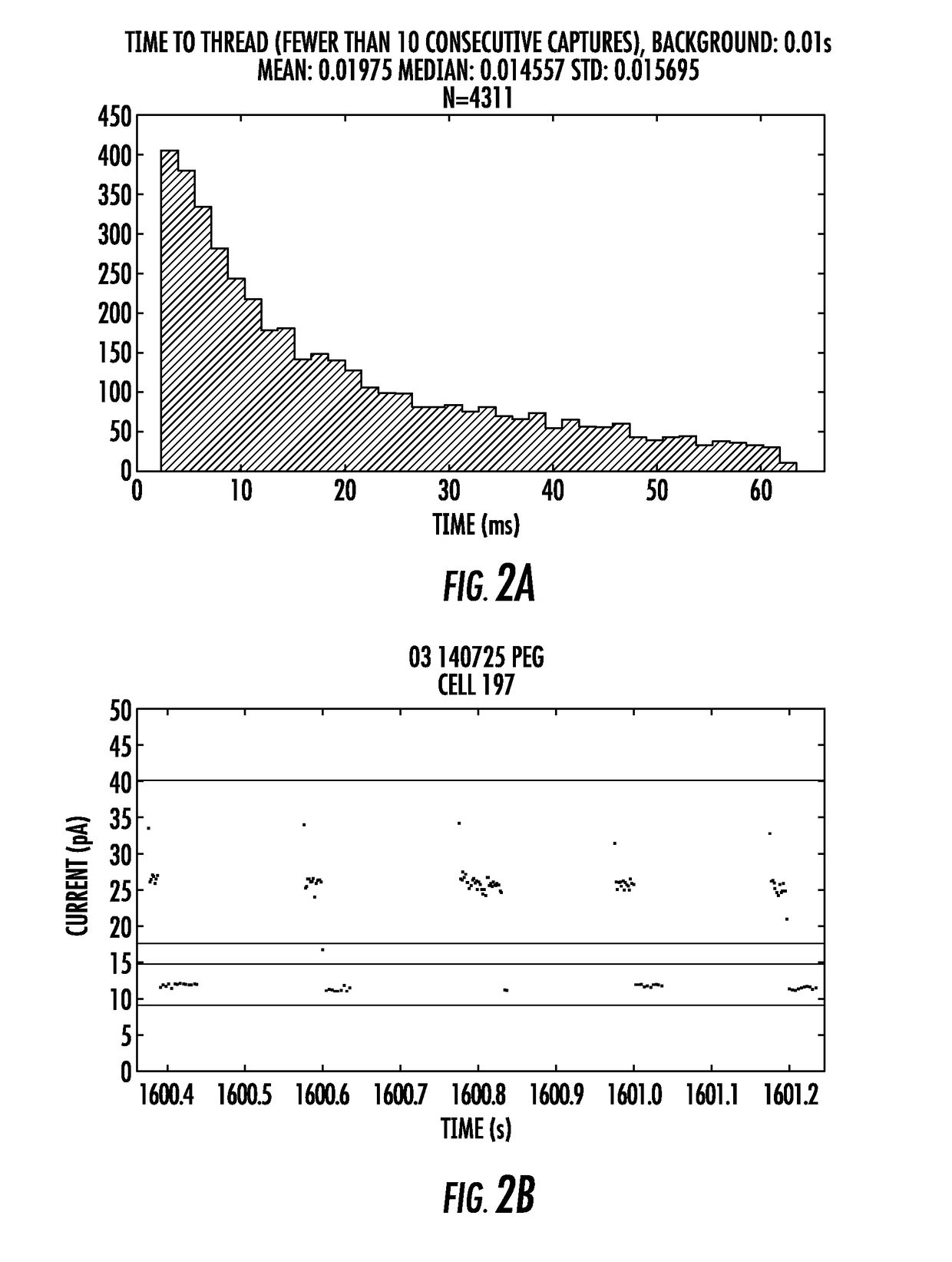alpha-Hemolysin Variants with Altered Characteristics
- Summary
- Abstract
- Description
- Claims
- Application Information
AI Technical Summary
Benefits of technology
Problems solved by technology
Method used
Image
Examples
example 1
Expression and Recovery
[0100]This example illustrates the expression and recovery of protein from bacterial host cells, e.g., E. coli.
[0101]DNA encoding the wild-type a-HL was purchased from a commercial source. The sequence was verified by sequencing.
[0102]Plasmid Construction.
[0103]The gene encoding either a wild-type or variant α-hemolysin was inserted into a pPR-IBA2 plasmid (IBA Life Sciences, Germany) under the control of T7 promoter.
[0104]Transformation.
[0105]E. coli BL21 DE3 (from Life Technologies) cells were transformed with the expression vector comprising the DNA encoding the wild-type or variant α-hemolysin using techniques well-known in the art. Briefly, the cells were thawed on ice (if frozen). Next, the desired DNA (in a suitable vector / plasmid) was added directly into the competent cells (should not exceed 5% of that of the competent cells) and mixed by flicking the tube. The tubes were placed on ice for 20 minutes. Next, the cells were placed in a 42° C. water bat...
example 2
T12 and / or N17 Variants
[0111]The following example details the introduction of a mutation at a desired residue.
[0112]Mutations.
[0113]Site-directed mutagenesis is carried out using a QuikChange Multi Site-Directed Mutagenesis kit (Stratagene, La Jolla, Calif.) to prepare the T12 and / or N17 variants.
[0114]The variants were expressed and purified as in Example 1.
example 3
[0115]This example describes the assembly of a nanopore comprising six a-HL variant subunits and one wild-type subunit.
[0116]The wild-type a-HL was expressed as described in Example 1 with SpyTag and a HisTag and purified on a cobalt affinity column using a cobalt elution buffer (200 mM NaCl, 300 mM imidazole, 50 mM tris, pH 8). The desired a-HL variant was expressed as described in Example 1 with a StrepTag and purified using a Streptactin affinity column on the fast protein liquid chromatography (FPLC) using an elution buffer (50 mM tris, 5 mM desthiobiotin, 200 mM NaCl, pH 8). The proteins were stored at 4° C. if used within 5 days, otherwise 8% trehalose was added and stored at −80° C.
[0117]Using approximately 20 mg of total protein, the wild-type a-HL to desired a-HL variant solutions were mixed together at the 1:6 ratio. Diphytanoylphosphatidylcholine (DPhPC) lipid was solubilized in either 50 mM Tris, 200 mM NaCl, pH 8 or 150 mM KCl, 30 mM HEPES, pH 7.5 to...
PUM
| Property | Measurement | Unit |
|---|---|---|
| Fraction | aaaaa | aaaaa |
| Fraction | aaaaa | aaaaa |
| Fraction | aaaaa | aaaaa |
Abstract
Description
Claims
Application Information
 Login to View More
Login to View More - R&D
- Intellectual Property
- Life Sciences
- Materials
- Tech Scout
- Unparalleled Data Quality
- Higher Quality Content
- 60% Fewer Hallucinations
Browse by: Latest US Patents, China's latest patents, Technical Efficacy Thesaurus, Application Domain, Technology Topic, Popular Technical Reports.
© 2025 PatSnap. All rights reserved.Legal|Privacy policy|Modern Slavery Act Transparency Statement|Sitemap|About US| Contact US: help@patsnap.com



